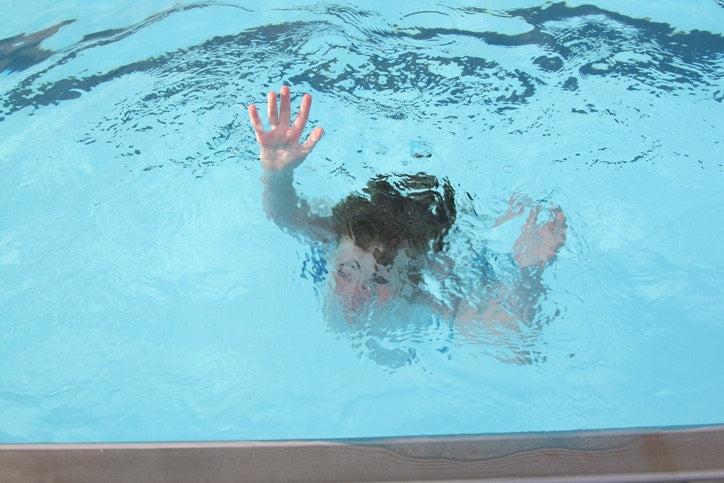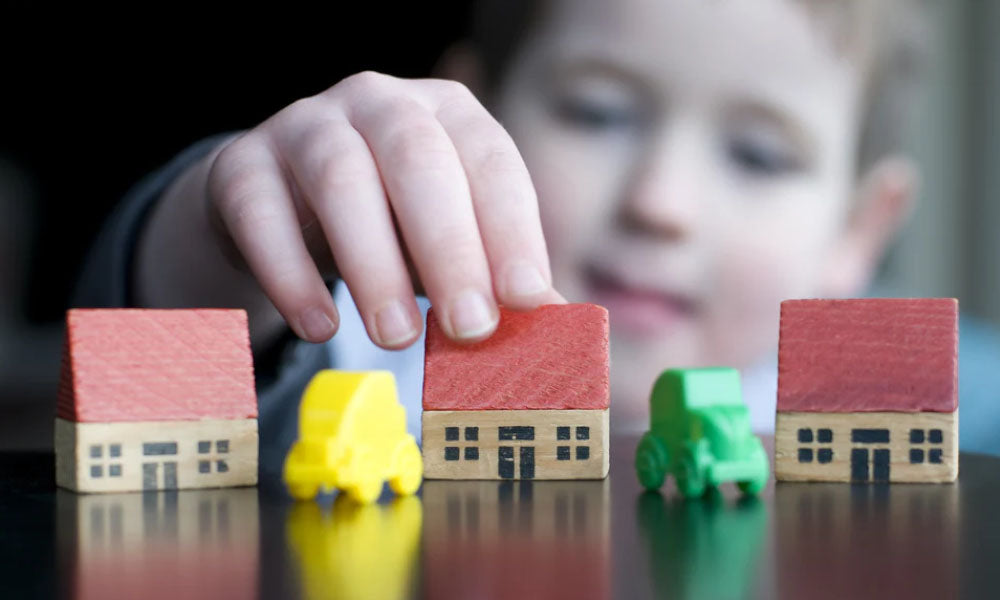I didn't see it at first. The flailing arms and legs of my three-year-old son made no sound above the water. His struggle was completely silent. Despite the fact that I was standing right next to him, I was oblivious to it.
He was standing right next to me when a friend asked me a question and I turned to respond. That's when my brave boy – who had completed a full summer's worth of one-on-one swim lessons – decided to try swimming across the deeper waters to the other ledge by himself. My friend didn't notice him. I didn't notice him.
It was a moment where everything leading up to it seemed perfectly normal. A moment where I thought I was being reasonably cautious with my son. And yet, it's the kind of moment that haunts thousands of parents for the rest of their lives, despite their good intentions and reasonable actions.
That moment ended for me when I turned around and saw him struggling under the water, trying to regain his footing. It’s a memory that still chills me. I pulled him out of the water as quickly as I could and though he had swallowed a small amount of water, he had not been under long. He was spared. But it was this scare that sent me on a mission to become more safety-conscious. Had I known that the leading cause of death for one- to four-year-olds was drowning, I would have been more vigilant that day.
In an effort to help arm other parents with the knowledge of how to help prevent the thousands of accidental deaths that occur every year, I put together a list of the three leading causes, according to a 2014 report from the Centers for Disease Control (CDC), and ways to help prevent these deaths, according to the CDC, the American Academy of Pediatrics, and several other organizations dedicated to protecting our young ones.
Infants (Ages 0 - 1)
The leading causes of death for infants are birth defects and other related issues. However, for all other children (ages 1 to 19), unintentional injury remains the leading cause of death. (The CDC refers to accidental deaths as “unintentional” due to their preventable nature.)
Suffocation (85% of unintentional infant deaths)
While SIDS (sudden infant death syndrome) is listed by the CDC as a separate cause of death from suffocation, the CDC notes that “it can be hard to tell SIDS apart from other sleep-related infant deaths…”
The American Academy of Pediatrics released updated sleeping guidelines on October 24, 2016 which include, in part, the following:
- Place the baby on his or her back on a firm sleep surface such as a crib or bassinet with a tight-fitting sheet.
- Avoid use of soft bedding, including crib bumpers, blankets, pillows and soft toys. The crib should be bare.
- Share a bedroom with parents, but not the same sleeping surface, preferably until the baby turns 1 but at least for the first six months. Room-sharing decreases the risk of sudden infant death syndrome (SIDS) by as much as 50%.
For more prevention strategies, go here.
Motor vehicle-related accidents (5% of all unintentional infant deaths)
- Select the right car seat by checking ease-of-use ratings issued by the National Highway Traffic Safety Administration.
- Once installed, get your car seat inspected by locating a certified technician near you. The CDC estimates that 59% of car seats and are misused in a way that could reduce their effectiveness.
- The CDC recommends using a rear-facing car seat in the back seat from birth until the child reaches the upper weight or height limit of the car seat (usually around age two). Car seat use reduces the risk for death to infants by 71% in passenger vehicles.
More prevention strategies here.
Drowning (3% of all unintentional infant deaths)
- When bathing your infant, never leave them alone, even for a few seconds. Most infant drownings occur in bathtubs and buckets and infants can drown in as little as one inch of water.
- Learn CPR for infants by taking a class and/or watching a video demonstration.
- For more prevention strategies, see here.
Preschoolers (Ages 1 - 4)
Drowning (32% of all unintentional preschooler deaths)
- Enroll your child in formal swim lessons. Research shows that this reduces the risk of drowning among preschool-aged children.
- If you have a swimming pool, install a four-sided fence. Most one- to four-year-old drownings occur in home swimming pools and fencing in the pool reduces the risk of drowning by 83%.
- Learn CPR for small children by taking a class and/or watching a video demonstration.
- Be within reach of the child at all times.
- Do not be involved in distracting activities when supervising as drownings occur quickly and quietly.
For more prevention strategies, see here.
Motor vehicle-related accidents (24% of all unintentional preschooler deaths)
- Once your child outgrows his or her rear-facing car seat, the CDC recommends using a forward-facing car seat in the back seat until the child reaches the upper weight or height limit of the car seat (around age 5). Car seat use reduces the risk for death to toddlers by 54% in passenger vehicles.
- Install a rearview camera (like this one which Best Buy can install for you) if your car does not have one. Every week in the US, 50 children are backed over, most of whom are 12 to 23 months old.
For more prevention strategies, see here.
Suffocation (10% of all unintentional preschooler deaths)
- Cut food into pieces no larger than one-half inch. Food accounts for over 50% of choking episodes.
- Insist that children sit down while eating.
- Walk through child-accessible areas to make sure plastic bags or sheets, cords, ribbons, toys with small parts, coins, balloons, and other choking hazards are not within reach.
- Learn how to respond to a choking emergency (e.g., Heimlich, tongue-jaw lift, CPR, etc.).
- Remove drawstrings from clothing and replace dangerous window coverings (e.g., blind cords) with safe ones.
For more prevention strategies, see here.



